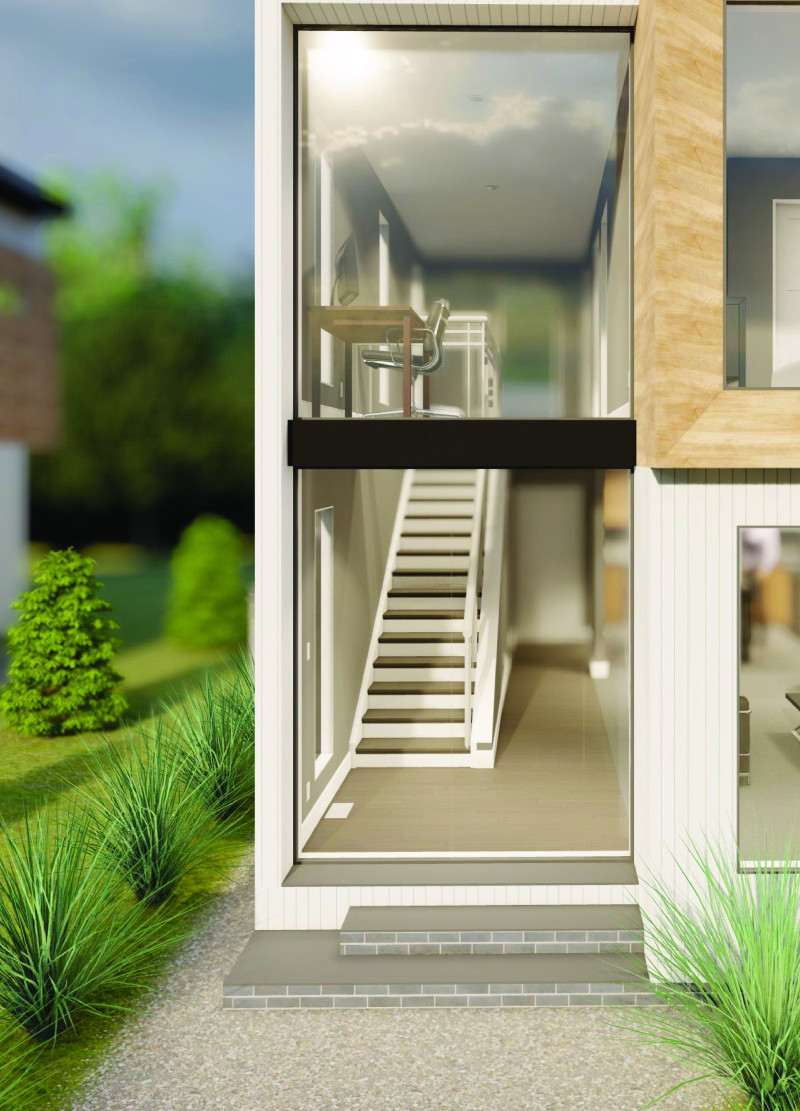5 key facts about this project
The Gardenside project is a residential architectural design that emphasizes sustainability, modular construction, and community integration. Located in a context that fosters environmentally responsible living, the project is conceived with the intent to provide an affordable living option while maintaining a connection to the natural environment. The overall design reflects a systematic approach to space utilization, material selection, and energy efficiency.
The architecture of Gardenside features a two-floor structure designed with an open floor plan on the first level that includes a living area, kitchen, and dining space. This arrangement not only facilitates social interaction among residents but also optimizes natural light through strategically placed large windows. The second floor contains private spaces, featuring multiple bedrooms and bathrooms, ensuring privacy and comfort for the inhabitants. The use of reclaimed timber for exterior cladding gives the structure a distinctive appearance while supporting sustainable practices.
Sustainable Design Approaches
One of the standout features of the Gardenside project is its commitment to sustainability through innovative design solutions. The incorporation of modular construction methods reduces both material waste and construction time. This process entails prefabricating components that are assembled on-site, leading to a reduction in onsite labor requirements and minimizing environmental impact. Additionally, the project integrates renewable energy sources such as solar panels, along with energy-efficient fixtures. This combination not only lowers operational costs for residents but also contributes to a reduction in carbon footprint.
Water conservation is addressed through a rooftop water collection system that supports non-potable water applications, further enhancing the sustainability of the project. This thoughtful integration of water efficiency measures reflects an understanding of the ecological implications of residential design.
Functionality and Space Utilization
The layout of Gardenside is defined by its multifunctional spaces that adapt to various needs. The open-plan design on the first floor allows for flexibility in how spaces are used, accommodating both everyday family activities and social gatherings. This versatility makes the project well-suited for modern living. The mudroom and laundry spaces included within the design help maintain organization and reduce clutter, enhancing the overall livability of the home.
Architectural details, such as the façade's contrast between reclaimed timber and modular panels, add both visual interest and structural performance. The careful placement of fenestration ensures that occupants enjoy ample natural light and promotes ventilation, enhancing indoor air quality. Furthermore, the use of energy-efficient materials aligns with contemporary architectural ideas focusing on environmental responsibility.
To explore the architectural plans, architectural sections, and broader architectural designs in detail, readers are encouraged to review the project presentation. This documentation provides further insights into the unique design approaches and innovative elements that characterize the Gardenside project.






















































